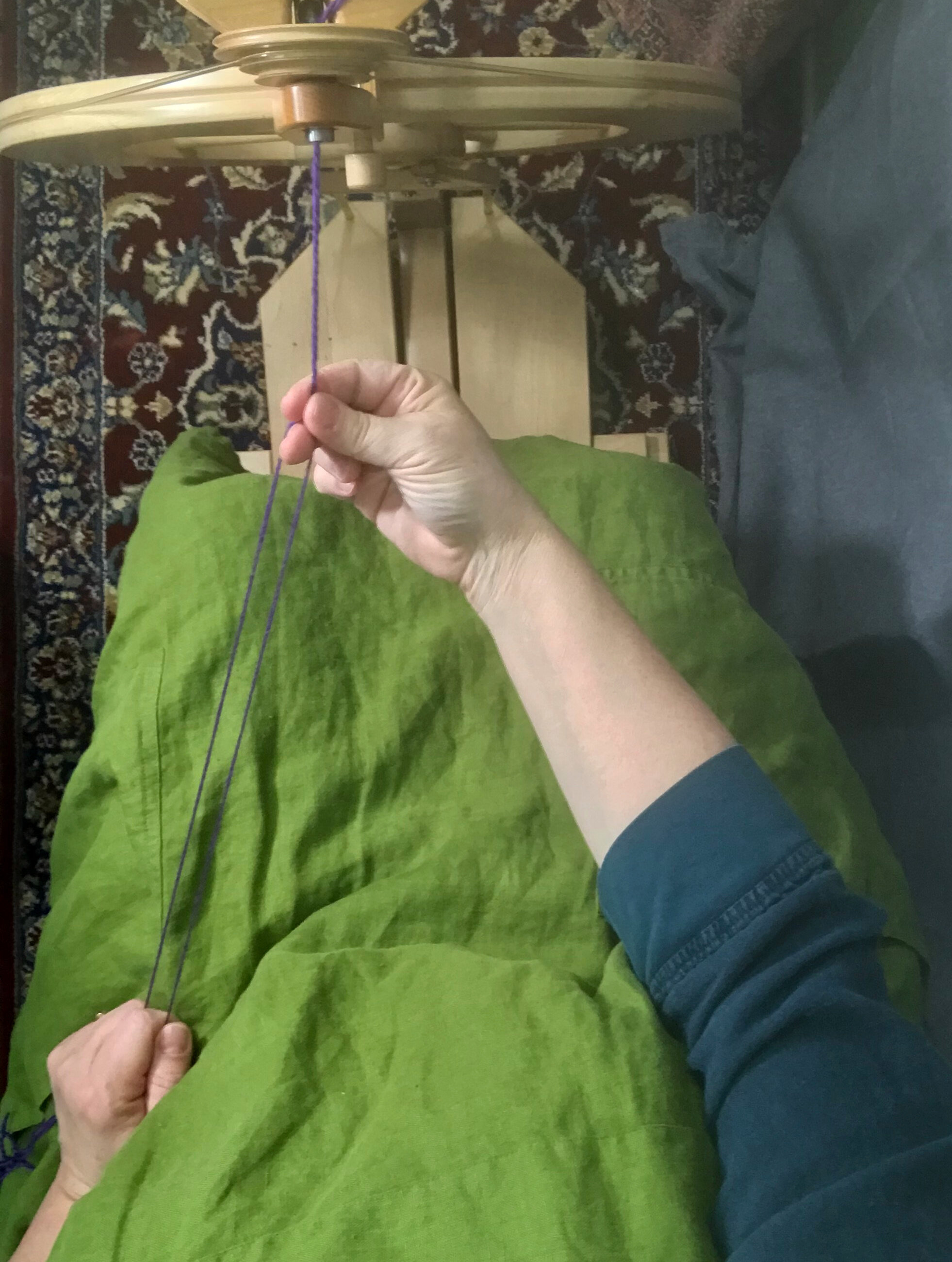I have had a crazy ammount of insomnia, so I am a little behind with our Plying Sample Along.
I want to note that we will be spinning our singles that will stay singles, seperately. They need a different amount of twist, and it can be a bit tricky.
My left hand doesn’t move when I ply
Feeling like I have control over my singles when you are plying is something I find very important. If I don’t feel like I am controlling my singles, my plying can get quite wonky. Yes, that is a technical term. But I know you’ve seen it and experienced it, one ply wraps around the other, the ply is really uneven. The best way I find to feel in control of my plying is how I position my hands.
I do a couple of things that help me maintain constant, and even tension on my plies, both I learned form Judith Mackenzie in class at Rhinebeck approximately 100 years ago.
My fingers are between the plies front and back, and the yarn is pretty taunt.
I keep fingers between the plies, and I keep my back hand locked at my hip and don’t move it.
You can see in the photo that my back (left) hand is at my hip, it never moves from there. I also have a finger between the two plies. The static hand allows me to tension consistently, I am pulling both plies until they are almost taunt. I am not gripping it tightly, the yarn can slide freely. The finger between, helps me catch unevenness in the plies, like if one ply has a pigtail, or a snarl. I can do this comfortably, with control, up to four plies.
I move only my front hand (for me it’s my right hand)when I ply. More often than not I keep fingers between the plies with my front hand too. I feel like I can give the yarn a little more tension if I need to that way, and can really get the plies to settle in together.
Here’s an awkward photo, but it shows which fingers I use between plies.
When I ply, I move my right hand back and forth. Sometimes I ply just by look and sometimes I ply counting treadles. With my left hand anchored back and out of the way, I have an excellent clear view of my yarn for the whole stretch that it’s plying, until it winds onto the bobbin.
Since I’ve started using my fingers between the plies I have had so many fewer pigtails and knots slip through. If a ply breaks or if I do have a twist or a knot come though, I have my plies literally in hand in two places, and I can stop, fasten my yarn on my wheel, repair or untwist with greater ease.
If you have trouble keeping your plying consistent, consider trying one or more parts of my method.
If you are one of my Patrons, I will have a quick video up for you tomorrow, showing my plying method in action.




